Custard is undoubtedly the base of pastry creams and many desserts. Today, we will learn how to prepare an excellent custard, from the ingredients to its correct storage.
Let’s start!
table of contents
How to Make Custard Step by Step

Equipment
- Steel Pan
Ingredients
- 1 l Whole Milk
- 300 gr Egg Yolks ((about 15 Yolks))
- 320 gr Granulated Sugar
- 50 gr Rice Starch
- 50 gr Corn Starch
- 1 pod Vanilla Bourbon
- 3 gr Salt
For Sanitize the pan
- 20 gr Food-grade Alcohol
Instructions
- Bring the milk and the salt to a boil.
- Mix the egg yolks with the sugar, the pulp of vanilla, and the starches.
- Dilute the mixture with the boiling milk, pouring it into many times
- Bring the mixture back to the stove over low heat, and continuously stir until the cream begins to firm up.
- Sanitize a steel pan with food-grade alcohol
- When the custard is ready, pour it into the container sanitized with the alcohol, cover with plastic wrap and cool quickly to+4°C (39°F) before using.
- Before using the custard, I recommend you stir it vigorously with a whisk to make it glossy and smooth again.
Video
Nutrition
Common Mistakes to Avoid When Making Custard (Pastry Cream)
Quick diagnosis: the most likely cause and a practical fix so your custard (pastry cream) always turns out smooth and silky.
Quick Best Practices
- Pour hot milk slowly while whisking: prevents thermal shock
- Use a thermometer: stop at 180–185 °F / 82–84 °C
- Dissolve starch in cold liquid before heating
- Cover with plastic wrap directly on the surface and chill quickly
- For silkiness: combine cornstarch + rice starch
- Always use real vanilla bean, pure extract, or fresh citrus zest
How to Flavor Custard
Once your custard is ready, you can customize the flavor in many ways:
- Nut Pastes (such as hazelnut or pistachio): about 3.5 oz paste for every 2.2 lbs (1 kg) of cooled custard.
- Chocolate: melt and add as described in the “Ingredients > Chocolate” section.
- Liqueurs: around 1.8 oz (50 g) per 2.2 lbs (1 kg) of chilled custard. Adjust depending on the type of liqueur and your taste preference.
Cooling and Storage
No matter which method you use, once cooked, custard must be cooled quickly. This stops the eggs from overcooking and prevents bacteria growth.
For best results, transfer the custard into a clean, sanitized metal pan. Cover with plastic wrap touching the surface and chill rapidly to 39°F (4°C). If you have a blast chiller, use it for the smoothest texture.
Before serving or using the custard, whisk it vigorously to restore its creamy texture and shine.
Properly prepared and cooled custard can be stored in the refrigerator at 39°F (4°C) for up to 2 days. If you fold in whipped cream (to make an Italian-style Chantilly cream), storage time is reduced to 24 hours.
You can technically freeze custard by adding 0.35 oz (10 g) of gelatin per quart (1 liter) of milk to the base recipe. However, freezing is not recommended—especially with home freezers—since it often causes lumps once thawed.
I REPLAY YOUR QUESTIONS ABOUT CUSTARD
This is not a good idea because, with Flour, you would get a stickier and thicker Custard.
Flour is suggested if you use up to 8 eggs per liter of milk.
Not a good idea because potato-starch produces a very sticky and gummy texture. Also, once in the fridge, the cream will tend to divide and lose liquid.
Yes, if you want to prepare a Baking Custard. On the other hand, adding the egg whites will make the Custard very stiff and not very pleasant in the mouth if you want to use it “pure” to fill pastries and cakes.
If you notice it just after cooking, you can extend the cooking time by a few minutes.
Otherwise, if the cream is too liquid once chilled, the easiest solution (just for emergency) is to heat about 1/3 of it, add 20gr for each liter of milk of soaked gelatin. Then mix it into the remaining cream and chill again for a couple of hours.
This phenomenon is called “syneresis” and can depend on incorrect cooking (too long or too short) or a too-high percentage of fat.
By replacing 10% of the sugar in the recipe with glucose syrup, you will limit the problem…
Yes, you can replace between 20% and 50% of the milk’s weight with heavy cream. In this way, you will obtain a Custard with a smoother texture and a rounder taste on the palate.
Yes. You will have a slightly less fatty custard, but the result will not vary perceptibly.
If well stored and covered, you can keep the Custard in the refrigerator at +4°C (39°F) for up to 2 days. However, if you add whipped cream to it, the storage time is reduced to 24 hours.
Generally speaking, this is not a good idea because it will be quite lumpy and runny once thawed.
If you want to give it a try, add 10gr of gelatin for every liter of milk. The gelatin will help keep the texture of the cream firmer.
No problem! Soy or rice milk are excellent substitutes for cow’s milk, and you can replace them with equal weight.
Sure, using only rice starch and corn starch (Maizena), you will obtain a completely gluten-free product.
Yes, the Custard with added butter is called Mousseline Cream and is widely used in French pastry to fill cakes and mignon pastries. The proportion is about 420gr of soft butter per 1kg of well-cold Custard.
Yes, you can increase the quantity of starch to compensate for the thickening action of the yolk. For example, you can use 55gr of rice starch and 80gr of corn starch for 1 liter of milk.
To satisfy the eye, you can add a small amount of yellow food coloring gel or a bit of turmeric.
In general, you can use 100gr of dry fruit paste (pistachio or hazelnut) to flavor 1kg of well-cold Custard.
I recommend not exaggerating with paste quantity because it weighs down the cream and makes it more liquid.
Generally, the unit of measure for the Custard recipe is the quantity of milk.
If you need less cream, you can divide the recipe as you prefer. However, I recommend that you do not go below 250ml of milk to ensure better cooking.
Sure, I recommend using coloring gels and adding them to the Custard once it is well chilled. Consider that the starting base is yellow, so the colors will turn accordingly!
If you have no alternative, yes. I personally recommend a good vanilla bean or a high-quality pure vanilla extract.
In case you miss one of the 2 starches, you can easily substitute the missing one.
Keep in mind that if you use only rice starch, you will obtain a more fluffy (and less-structured) Custard, while if you use only corn starch, you will have a more compact and stiff texture.
If you need to make a Tarte with a custard that will bake in the oven, I recommend making a specific Baking Custard.
The easiest solution is definitely to choose yellow paste eggs (the ones to make homemade pasta). Otherwise, you can use a tiny amount of yellow/red gel colorant.
How to Make Custard at Home
Traditional Method
Whisk together the egg yolks, sugar, flavorings, and starch (do not whip to incorporate air). Once the milk reaches a boil, gradually pour it into the egg mixture a little at a time while whisking. Return the mixture to the saucepan and cook over medium heat, whisking constantly until thickened.
When the custard is done, cool it quickly as explained below and flavor as desired (for example, add fresh lemon zest for a lighter taste).
Whipped-Yolk Method
Whip the yolks, sugar, flavorings, and starches in a stand mixer until pale and fluffy. Gently pour this mixture into the boiling milk without stirring.
As soon as the mixture begins to bubble around the edges, whisk vigorously and remove from the heat. Because the whipped yolks contain more air, this method slows down heat transfer slightly, so cooking takes a bit longer.
Microwave Method
This method works best when making small batches of custard.
First, mix the eggs, sugar, starch, and flavoring together until smooth. Whisk in the milk, then transfer the mixture to a microwave-safe container (Pyrex or microwave-safe plastic). Cook on full power for about 2 minutes.
Remove and stir vigorously to redistribute the heat. Repeat in intervals of 1 to 1 ½ minutes, stirring each time, until the custard is fully cooked and thickened.
Thermomix Method
The Thermomix is very convenient for custard, especially for batches under 1 liter of milk. Add all ingredients to the bowl, blend on medium speed for 30 seconds, then cook at 194°F (90°C) for 7–8 minutes.
Cool quickly once finished. For chocolate custard, add chopped chocolate during the last minute of cooking, then blend at high speed for 10 seconds once finished.
—Essential Ingredients for Custard
Eggs
Eggs determine the richness and stability of the cream, separating a simple baking custard (such as for a custard pie) from a professional-quality pastry cream for cakes and desserts. A premium custard uses about 20–25 yolks per liter of milk. Use fresh or pasteurized yolks for food safety.
The key role of eggs is to provide lecithin, a natural emulsifier that binds the fat in the yolks with the liquid in the milk. Lecithin also adds shine and helps prevent separation during storage. Eggs, along with starches, are the main thickening agents, setting around 158°F (70°C).
Keep in mind:
- Adding sugar raises the coagulation point of yolks (plain yolk sets at 158°F/70°C, sweetened yolks closer to 176°F/80°C).
- The more yolks you use, the lower the cooking temperature needed—but the recipe will contain less starch.
Starches vs. Flour
Flour is sometimes used at home, but it gels at 197°F (92°C) and works only in custards with fewer yolks (up to 10 per liter of milk). Today, rice starch and cornstarch are preferred because they gel at lower temperatures and give a cleaner texture:
- Rice starch: gels at 172°F (78°C), creating a creamy custard with a glossy finish.
- Cornstarch (Maizena): gels at 179°F (82°C), yielding a firmer, more pudding-like texture.
Avoid potato starch—it tends to make custard gummy and stringy.
Sugars
Sugar not only sweetens but also raises the coagulation point of eggs. For a standard custard, use about 250–350 g (1 ¼ – 1 ¾ cups) sugar per liter of milk. Honey may replace part of the sugar, but use about 30% less by weight, and remember it adds its own flavor profile.
Milk & Heavy Cream
Whole milk is the base, but substituting up to 30% of the milk with heavy cream yields a richer, rounder flavor.
Chocolate
Chocolate custard is a classic base for mousses and semifreddo. On average, use 400 g (14 oz) chocolate per liter of milk (around 50% cacao). As cacao percentage rises, reduce the chocolate quantity to avoid an overly stiff custard:
- 60% cacao: about 350 g per liter
- 70% cacao: about 250 g per liter
- 80% cacao: about 200 g per liter
For best results, replace about 40% of the milk with water or plant-based milk (soy, rice). Use fewer yolks (max 10 per liter) to let the chocolate flavor shine.
—How to Balance a Custard Recipe
Balancing ingredients is key to achieving the texture you want. Here are the basic rules:
- Starch: Once yolks exceed 200 g per liter of milk, reduce starch by 10 g for every additional 100 g of yolks.
- Sugar: For every 100 g of yolks above 200 g, add 20 g of sugar.
Example Balances
Custard with 10 Yolks
Great for chocolate custard (see above for ratios):
- 1 L whole milk
- 200 g yolks (≈10)
- 300 g sugar
- 55 g rice starch
- 55 g cornstarch
- 3 g salt
- Vanilla
Custard with 20 Yolks
- 1 L whole milk
- 400 g yolks
- 340 g sugar
- 90 g starch (20 g less)
- 3 g salt
- Vanilla
Custard with 40 Yolks
- 1 L whole milk
- 800 g yolks
- 420 g sugar
- 50 g starch
- 3 g salt
- Vanilla
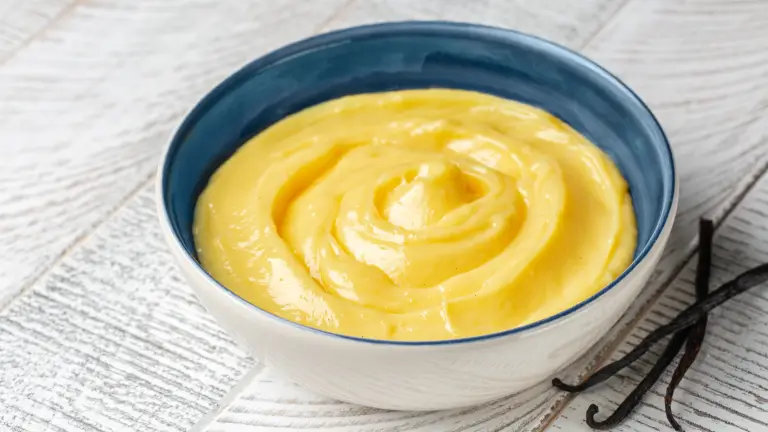






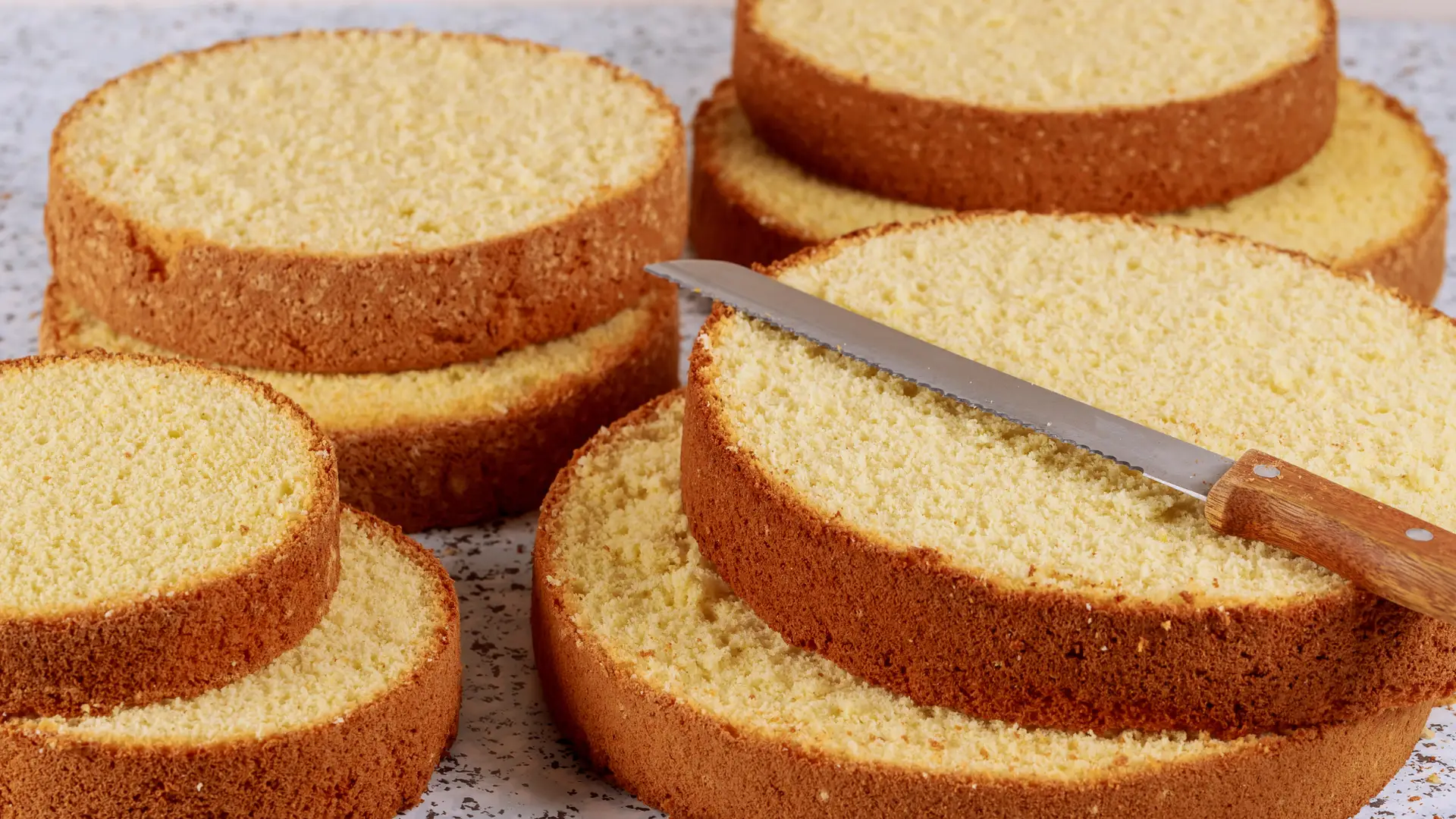
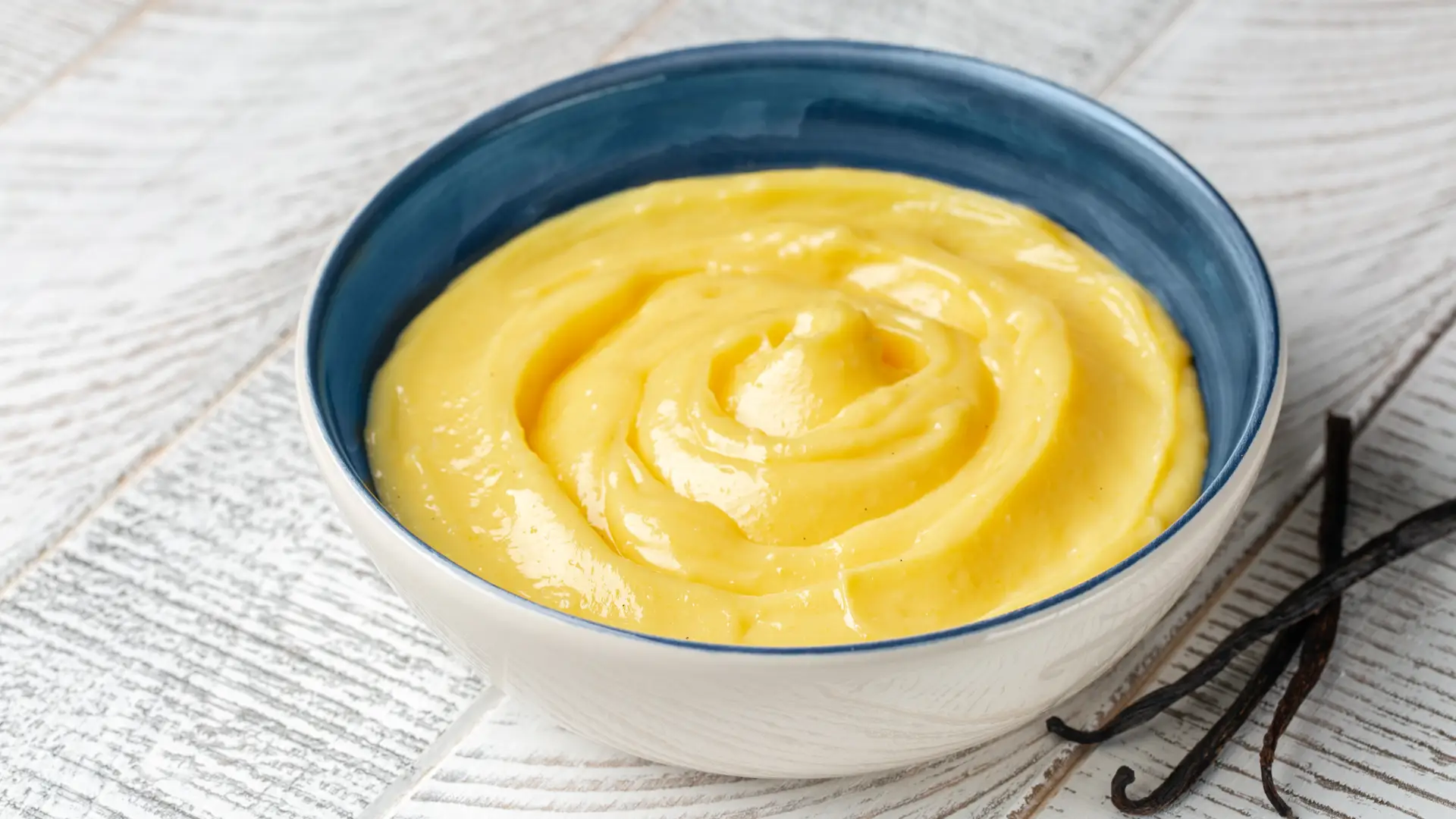

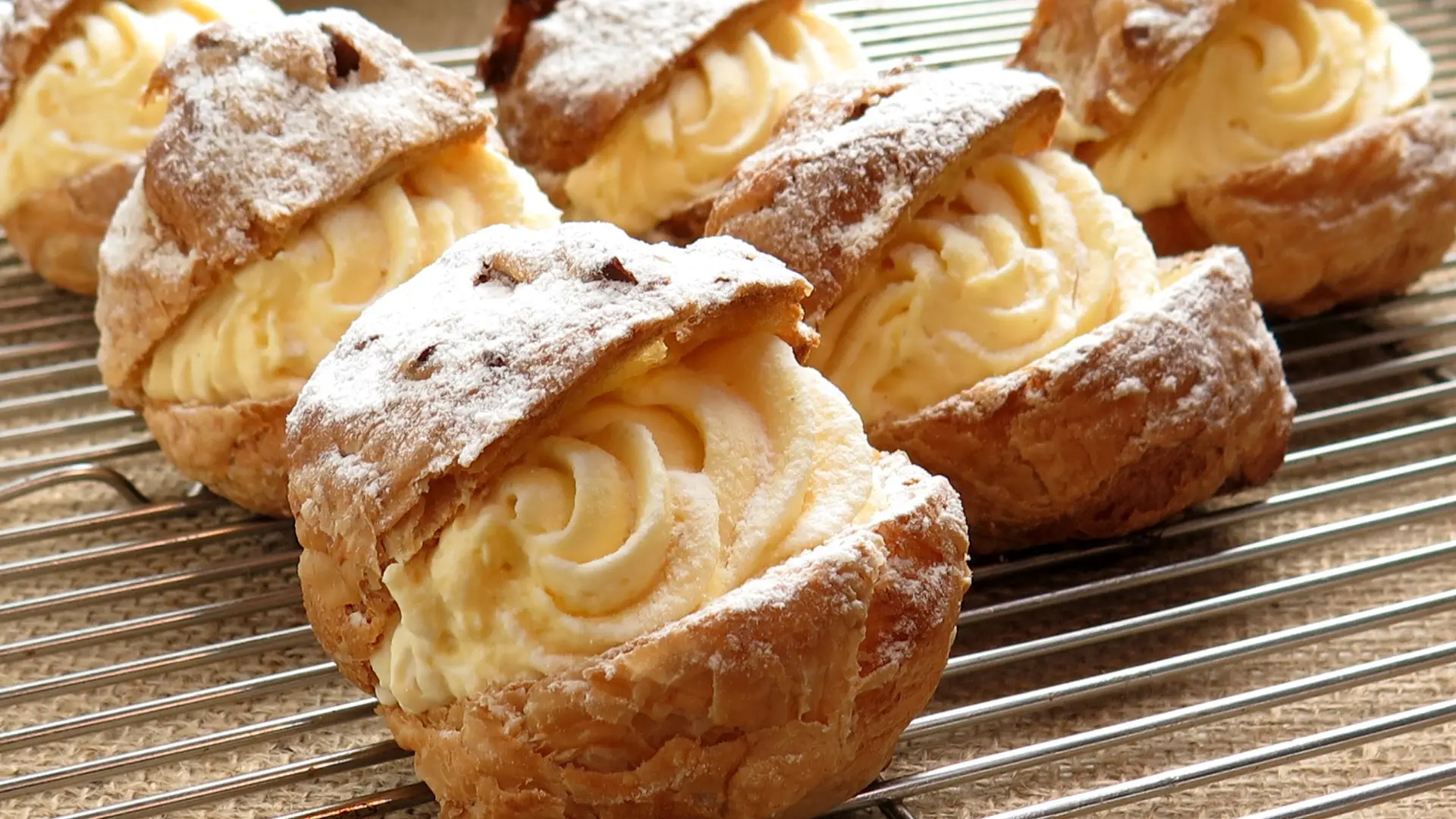













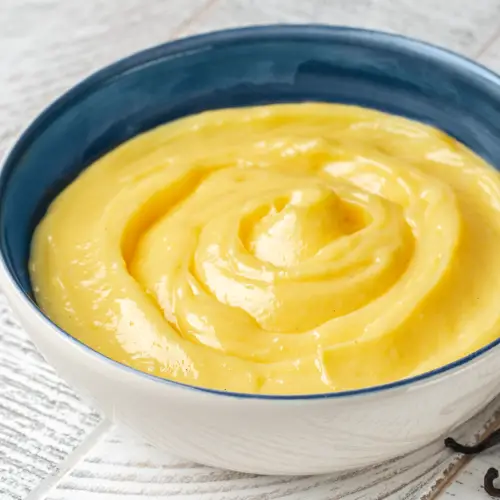


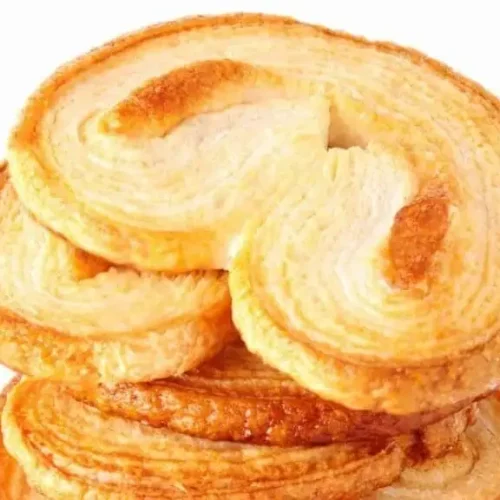



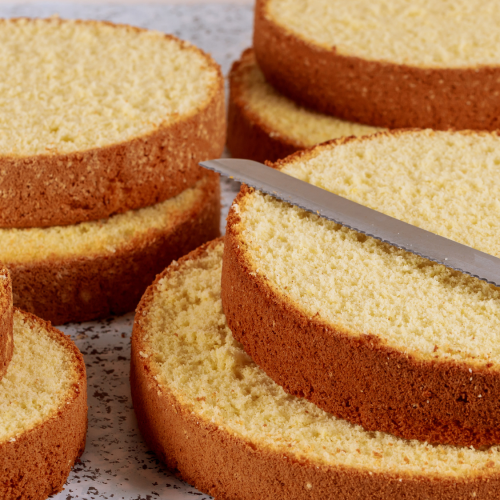

14 comments about “Crema Pasticcera Professionale: la Ricetta Facile passo passo”
Ciao,
Anche se facessi una crema pasticcera al pistacchio dovrei utilizzare pochi tuorli oppure ciò vale solo per quella al cioccolato? Siccome dovrei fare un Pan di Spagna a due strati, uno con la crema classica, e l’altro al pistacchio, mi chiedevo se potevo prepararle in un’unica preparazione, oppure se è meglio farle separate qualora le dosi di tuorlo devono essere diverse. Grazie
Ciao Andrea,
puoi preparare tranquillamente la stessa crema. Il gusto delle uova varia soprattutto il gusto del cioccolato, ma per le creme di frutta secca non hai problemi!
A presto!
Ben trovati: Grazie della bellissima spiegazione.
Ho riportato in un foglio di calcolo di Google il bilanciamento della crema pasticciera adesso vorrei sapere come poter diminuire (seppur di un poco ) la quantita di zucchero, essendo questo direttamente proporzionale alle uova, tenedo conto del tuo consiglio che riporta dalle 20 alle 25 uova per litro di latte.
Grazie e saluti dal Venezuela
Ciao Fred! Un bel ritorno qui su bianco lievito. Ho trovato molto interessante la spiegazione sulla crema pasticcera. Circa l’amido di riso, è possibile sostituirlo con della farina di riso?
Ciao Luca,
potresti, ma la crema non avrà lo stesso aspetto. Per la crema ti consiglio di usare gli amidi, invece delle farine, perché gelificiano prima e ti permettono di non cuocere troppo la crema!
A presto!